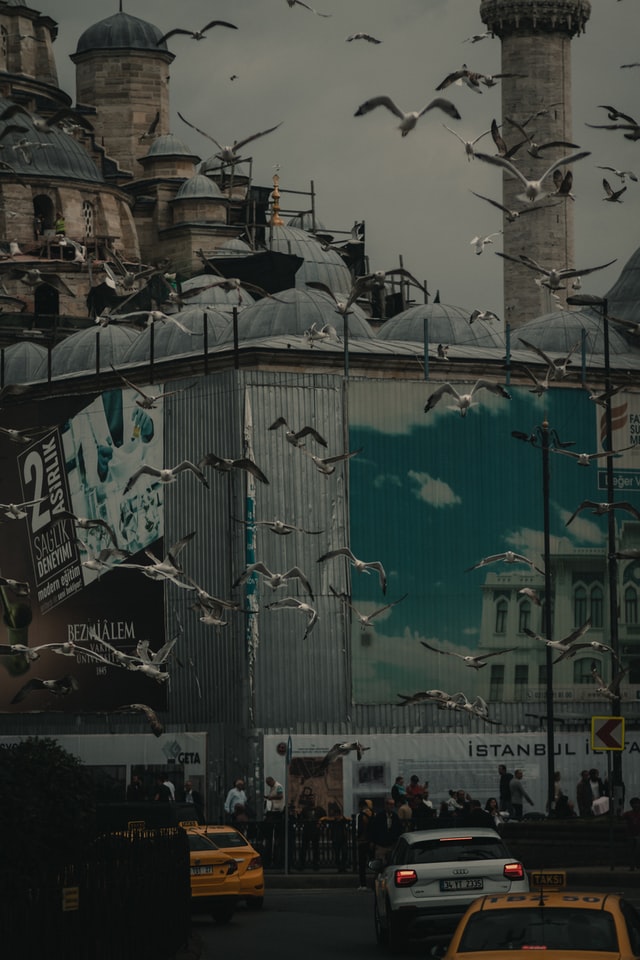
While nations continue their fight against Covid-19, fear of the disease is making way to fear of recessions, which will hit emerging economies harder than others. There are concerns that recessions may continue to claim lives; but reduced economic activity is more likely to reduce mortality, not only by restricting the spread of the coronavirus, but also by reducing pollution, work-related injuries, and traffic accidents.
I quantify the decline in traffic-related deaths and injuries during Turkey’s Covid-19 lockdowns. My focus on Turkey is not merely a homage to the country where I grew up. Traffic accidents disproportionately affect low- and middle-income countries, where 90% of traffic-related deaths occur. Over a million traffic accidents kill close to 7,000 and injure more than 300,000 people in Turkey alone every year. Losses to individuals and families are of course immeasurable, but accidents also take their toll on the economy through emergency response and health care costs, and loss of productivity, which, combined, can add up to 3% of GDP. These are financial resources that emerging economies desperately need to face the post-pandemic economic realities.
The first Covid-19 infection was announced in Turkey on March 11. On March 12, the government ordered all schools closed. More restrictions followed, including sport league suspensions, public park closures, shutdown of non-essential services, and curfews on persons aged 65 and older and those with chronic illnesses. On April 3, 31 cities where three-quarters of the population live were quarantined and curfews extended to youths under 20. On April 20, a 48-hour lockdown was declared, the first of many. The decline in mobility, especially in Istanbul, one of the most congested cities in the world, was drastic.
During April, when the strictest measures were in place, traffic accidents dropped by approximately 60%, deaths declined by 43% and injuries by 64% compared to April 2019. This is in addition to declines in March, when more lenient restrictions were in effect for half the month. My estimates imply that approximately 21,000 accidents, 17,600 injuries, and 200 deaths were avoided in only one and a half months when restrictions were in place. To put these numbers in perspective, 3,174 deaths were attributed to Covid-19 by the end of April. Moreover, fewer traffic injuries most likely helped hospitals cope with the pandemic more effectively by freeing up resources, as was the case in Chile, therefore saving even more lives.
Traffic injuries are the leading killer of children. High Covid-19 deaths among the elderly give us the impression that we must choose between protecting the old and the prosperity of the young. However, the evidence suggests that lockdowns do not necessarily come with this trade-off; instead, they save lives, directly and indirectly, in all age groups.
© Umut Oguzoglu
Umut Oguzoglu is Associate Professor of Economics at the University of Manitoba and a Research Fellow of the IZA.
Read more on the coronavirus crisis:
"Coronavirus and the labor market," by Daniel S. Hamermesh
"Fighting a coronavirus recession," by Daniel S. Hamermesh
"Pandemics and the labor market—Then and now," by Karen Clay
"Pricing the lives saved by coronavirus policies," by W. Kip Viscusi
"Health effects of the coronavirus recession," by Christopher J. Ruhm
"The long-term consequences of missing a term of school," by Simon Burgess and Hans Sievertsen
"Coronavirus, telecommuting, and the labor market," by Nikos Askitas
"Expectations about Covid-19 social-distancing measures in Italy and their impact on compliance," by Guglielmo Briscese, Nicola Lacetera, Mario Macis, and Mirco Tonin
"The coronavirus crisis and the next generation," by Bart Cockx
"Korea: A paragon of dealing with coronavirus," by Sok Chul Hong
"Economic implications of postponing the Tokyo 2020 Olympic Games," by Peter J. Sloane
"The sudden growth of employee autonomy during the coronavirus lockdown," by Elisa Gerten and Michael Beckmann
"Mitigating the work–safety trade-off," by Tito Boeri, Alessandro Caiumi, Marco Paccagnella
"Trading off lives for jobs," by Daniel S. Hamermesh
"Trends in Covid-19 infection: What New York City neighborhoods tell us," by George J. Borjas
"Labor markets during the Covid-19 crisis: A preliminary view," by Olivier Coibion, Yuriy Gorodnichenko, Michael Weber
"Did California’s shelter-in-place order work? Early coronavirus-related public health effects," by Andrew Friedsen, Drew McNichols, Joseph J. Sabia, Dhaval Dave
"200 billion hours to spend: The Covid-19 opportunity to upskill," by Peter Siminski, Emil Temnyalov
"The CARES Act—Massive government intervention in the economic crisis," by Richard Prisinzano
"What is happening to unemployment in the post-Covid-19 labor market?," by Katharine G. Abraham
"Measuring employment and unemployment—Primer and predictions," by Daniel S. Hamermesh
"Can inflation be accurately measured during a lockdown?," by Erwin Diewert and Kevin J. Fox
"The Covid-19 crisis exacerbates workplace injustices," by Philippe Askenazy
"Graduating during the Covid-19 recession," by Philip Oreopoulos
"Covid-19 and immigrant employment," by George J. Borjas, Hugh Cassidy
"So happy together?," by Daniel S. Hamermesh
"Covid-19’s impact on the economy: Measuring GDP during a pandemic," by J. Steven Landefeld
"Childcare during Covid-19," by Almudena Sevilla and Sarah Smith
"Labor markets in the Covid-19 pandemic: Western Europe and the US," by Hans-Martin von Gaudecker
"Effects of Covid-19 on spending and saving," by Seonghoon Kim, Kanghyock Koh, Xuan Zhang
Please note:
We recognize that IZA World of Labor articles may prompt discussion and possibly controversy. Opinion pieces, such as the one above, capture ideas and debates concisely, and anchor them with real-world examples. Opinions stated here do not necessarily reflect those of the IZA.